Earlier this week, I took delivery of the latest radio from C. Crane: the CCRadio-EP Pro. C. Crane sent me an early production model for evaluation.
Since posting an announcement last November, several SWLing Post readers have contacted me and asked if I would take a look at this next iteration of the venerable CCRadio-EP.
Yesterday, I started a proper evaluation of the EP Pro by taking it to a park where I compared it with my trusty Tecsun PL-660 on AM/mediumwave.
First impressions are favorable in terms of sensitivity, stability and audio, but with a number of caveats.
The EP Pro is not a true analog set like its predecessor–it’s based on the Silicon LabsSI4734 DSP chip.
In other words, much like the Degen DE321, the Degen DE32, the Tecsun R-2010D, the Kchibo KK9803 and the ShouYu SY-X5 (which I review in a shoot-out here), the CC-Radio EP Pro is a mechanically-tuned DSP receiver.
On the plus side, the new EP Pro will not drift like its analog ancestor (a common complaint from EP owners).
But truth be told, I’m not the biggest fan of mechanically-tuned DSP radios. Why? For one thing, it’s nearly impossible to eliminate muting between 10 kHz frequency steps on the AM band. Note here that the EP Pro is fixed at 10 kHz steps, though C. Crane tell me a future production run will have a 9/10 kHz step toggle.
Additionally, the EP Pro produces false peaks/images on either side of a strong AM or FM signal. In fact, C. Crane includes the following informational insert with the EP Pro:
This is going to be a quirky radio.
The tuning mechanism is…well…unusual…and takes some getting used to. I’ve also discovered that the top half of the AM dial is inaccurate. Here’s the EP Pro centered on WTZQ at 1600 kHz:
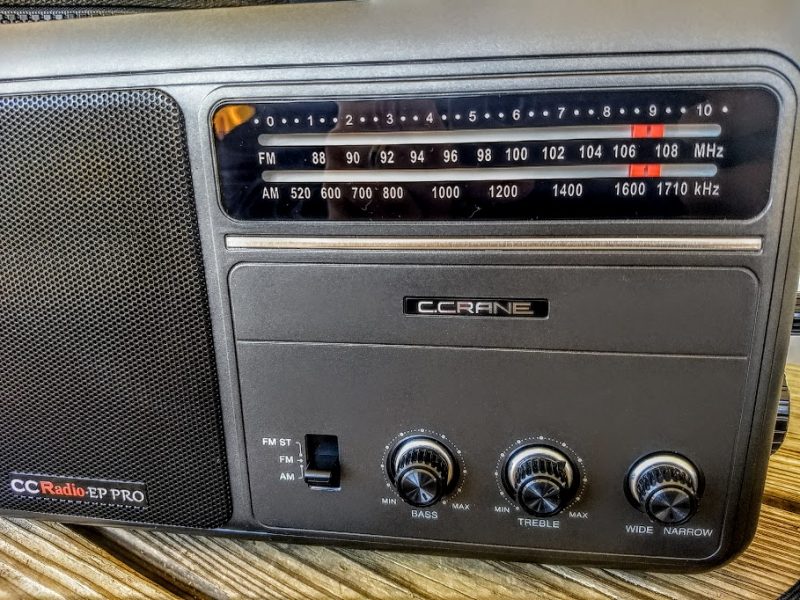 I estimate that the slide rule dial is off by about 40-50 kHz at the top end of the band. It’s much more accurate below 1,200 kHz, however. I plan to hook the EP Pro up to a signal generator and note the results in my forthcoming review.
I estimate that the slide rule dial is off by about 40-50 kHz at the top end of the band. It’s much more accurate below 1,200 kHz, however. I plan to hook the EP Pro up to a signal generator and note the results in my forthcoming review.
Speaking of an EP Pro review, I plan to publish it within the next two weeks, so stay tuned!
Follow CCRadio-EP Pro posts by bookmarking this tag: CCRadio-EP Pro
Click here to check out the CCRadio-EP Pro on C. Crane’s website.

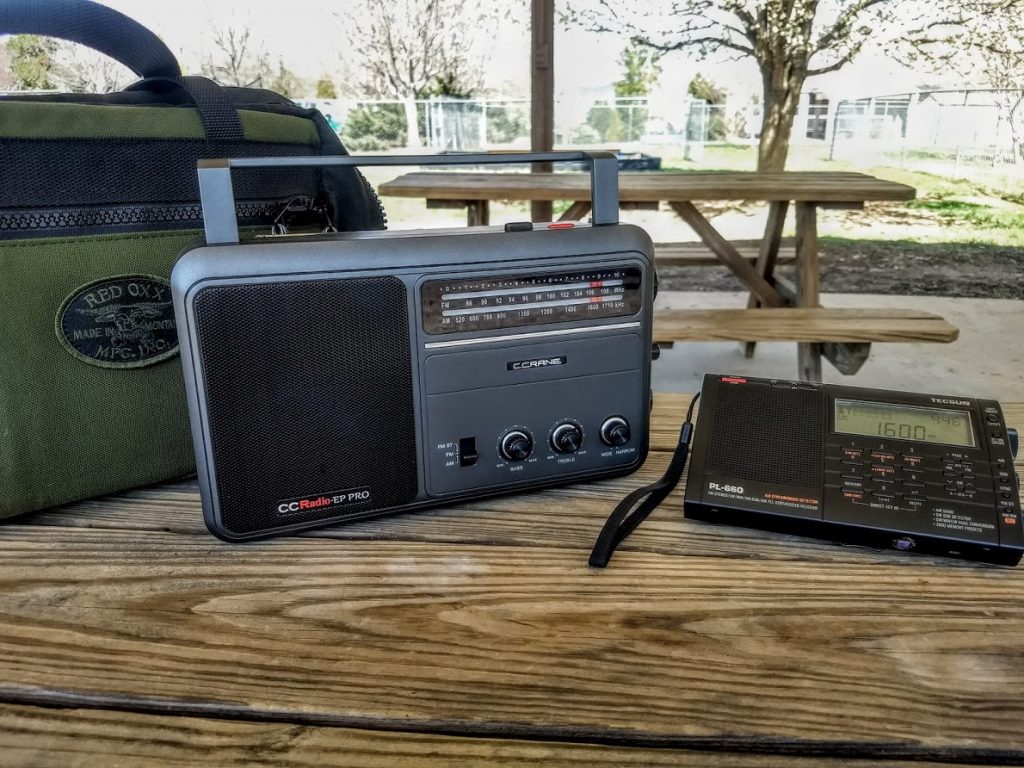
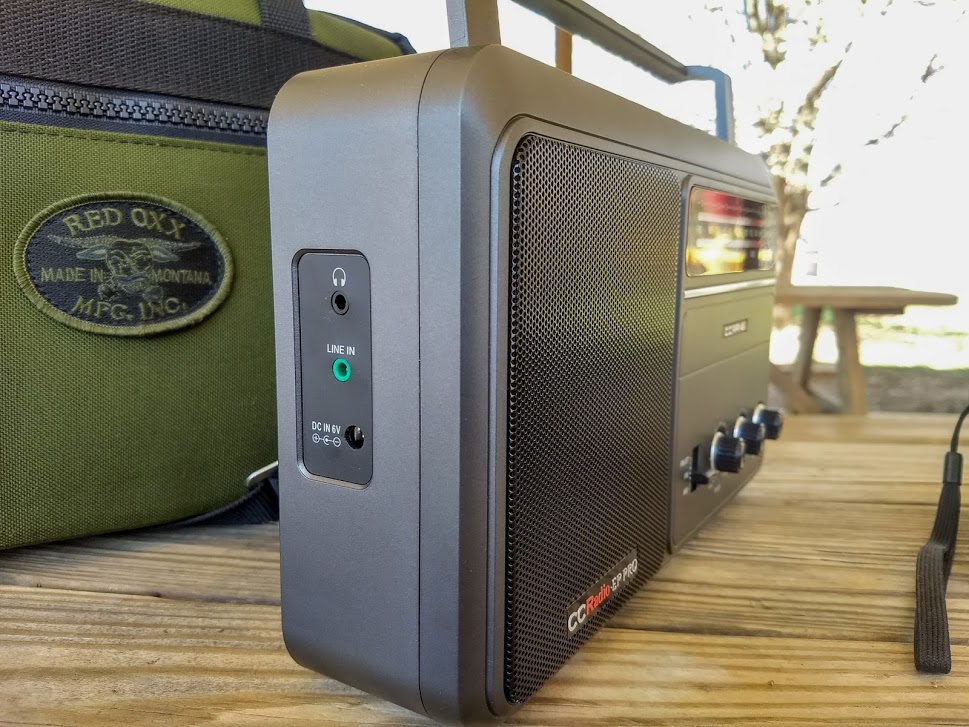
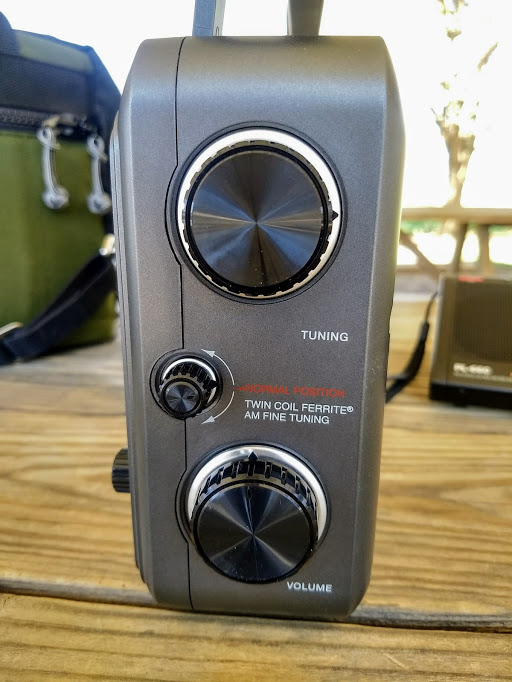
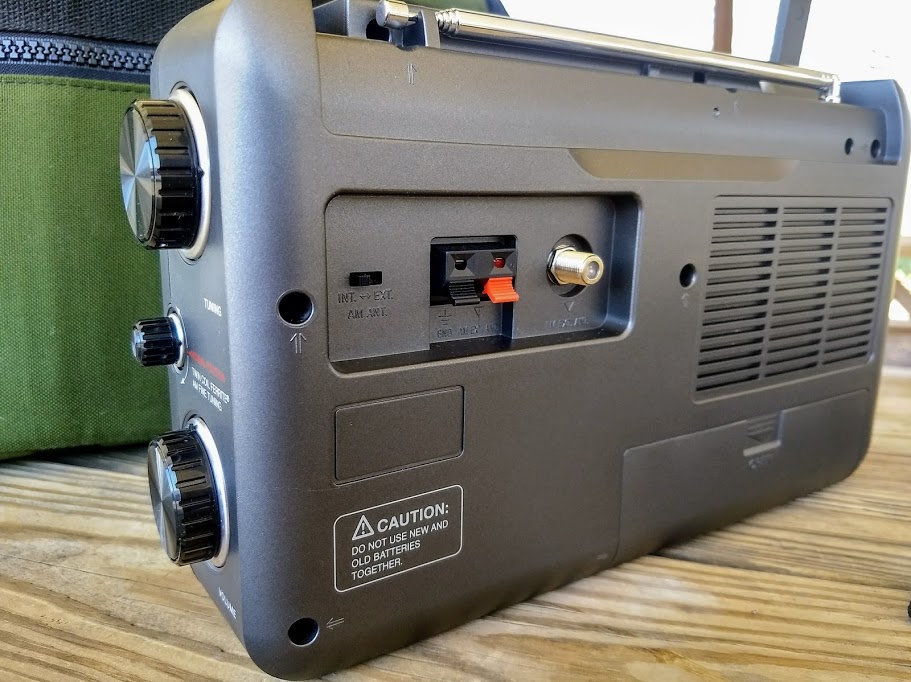
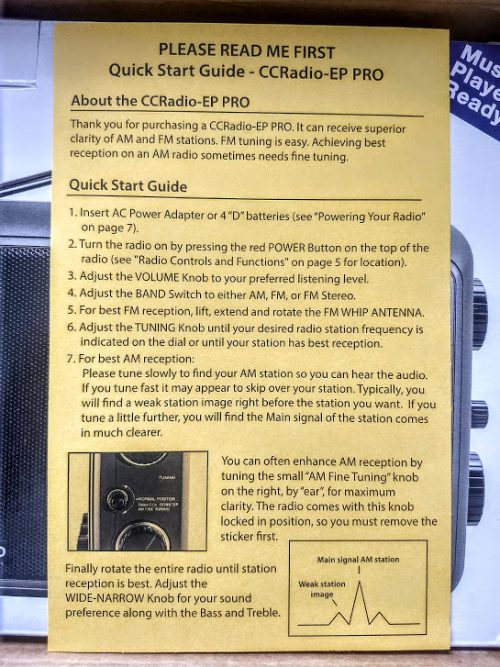
Does this mean the C Crane EP was the last analog AM/FM radio ever made?
The last seriously best sounding analog AM radio.
“Note here that the EP Pro is fixed at 10 kHz steps, though C. Crane tell me a future production run will have a 9/10 kHz step toggle.”
How does this currently 10kHz steps radio behave if a frequency split between 10kHz steps is tuned to, such as for example 1215 kHz (evenly split) – a frequency used in 9kHz step countries ??
Someone give it a try with a modulated signal generator ?
That other “prominent online radio reviewer” who tried to gloss over the EP Pro’s shortcomings failed to do so. Any serious radio enthusiast would be able to see right through his lame justifications. And with this additional review stating the undeniable – that the Pro is inferior to the original – I’ve decided to keep the older model. No need for an amateurish Pro.
As some of you may know, a prominent online radio reviewer gave this new version of the EP a rave review. Yet as I read the review in detail about the tuning quirks – the “false peaks” and the soft muting between AM frequencies, it was painfully obvious that a relatively inexpensive radio prized by MW DXers was being downgraded by this transitions to DSP. And I guess I was a little shocked that this “Pro” update of the EP was being praised in this review. And these awful new “features” were glossed over as mere idiosyncrasies, because “no radio is perfect.”
Here’s what I would specifically like to know. The reviewer stated that the CC Radio EP was remade as a DSP set because a “critical chip” could no longer be made. What chip? I’d like to know. A little online research turned up no specific radio chip being discontinued. And if that is true, are there no other chips which can offer the same or improved performance without going DSP? Or are analog radios just going to disappear from the shelves or something?
It all sounds fishy to me. I mean, the whole selling point of these new DSP is that they make it less expensive to manufacture radios, right? And I don’t think the EP Pro is going to be any cheaper.
It’s one thing for manufacturers like Tecsun to create new, innovative and relatively inexpensive receivers around these DSP chips. But to downgrade respected analog (the CC Radio EP) and PLL (the Degen DE1103) radios with new DSP based innards seems a travesty to me. And the “pro” moniker attached to the new EP seems only a marketing ploy.
Agreed, and I noticed that the internal ferrite is no longer disconnected on the Pro when you flip the external antenna switch.
I had the original EP but returned it. It was very sensitive, but the images and overloading were terrible in my area. For example, to hear local powerhouse 1200 WOAI, I had to rotate the radio and adjust the fine tuning to null out the local on on 1160, which is five miles away. Not even my cheapest radios have that problem. I was hoping that the Pro improvements were simply going to be elimination of the images and drift and improving the dial accuracy.
The reviewer seems to be giving it raves strictly for its sensitivity and selectivity when already tuned to a specific frequency. Still, all of the quirks make the radio undesirable for DXing.
Sorry, but with that list of ‘quirks’ (ie bad design and shortcomings) the radio seems to be in the ‘not fit for purpose’ category.
Hmm…in what way is the a significant upgrade worthy of the new name “Pro”? A name of “CCRadio-EP II” would be more appropriate.
The new model has:
-Soft muting
-Currently no 9/10 kHz step switch
-Major errors in accuracy on AM high band
-Funky “dual peak” (aka images) mechanical-DSP tuning
As Joe has said, it’s not a set for the MW DXer or radio hobbyist, but I doubt C. Crane will even attempt to market it as such. It’ll probably be a budget alternative to the CCRadio-2E for the “Coast To Coast AM” talk radio crowd as the original CCRadio-EP was.
This might not be the radio for serious radio hobbyists, but I find it intriguing. I might replace my GE Superadio II with one of these, because it has what I now consider to be an indispensable feature: a line in jack. Even with the tuning quirks, I’d find this an upgrade to the previous CCRadio-EP because of its slightly larger speaker.